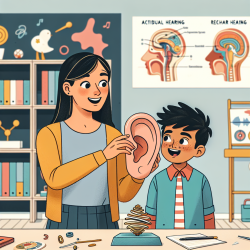In the realm of special education and therapy services, practitioners are continually seeking innovative ways to enhance their skills and the quality of services they provide. The research article titled Monitoring quality and coverage of harm reduction services for people who use drugs: a consensus study offers valuable insights that can be implemented to improve harm reduction services. This blog will explore the key outcomes of the study and how practitioners can leverage these findings to enhance their practice.
Understanding the Research
The study aims to address the gaps in monitoring the quality and coverage of harm reduction services for people who use drugs (PWUD). It emphasizes the importance of establishing validated and internationally agreed-upon indicators to evaluate the effectiveness of services such as opioid agonist therapy (OAT) and needle and syringe programs (NSP).
Key Findings and Indicators
The research identified twelve priority indicators that are essential for monitoring the quality and coverage of harm reduction services. These indicators are divided into three categories: specific OAT indicators, specific NSP indicators, and generic cross-cutting indicators. Here are some of the key indicators highlighted in the study:
- OAT Indicators: Coverage of estimated opioid user population, waiting time to first treatment admission, dosage, and availability in prisons.
- NSP Indicators: Coverage of estimated PWID population, number of needles/syringes distributed and collected, provision of other drug use paraphernalia, and availability in prisons.
- Generic Cross-Cutting Indicators: Infectious diseases counseling and care, take-home naloxone, information on safe use/sex, and condoms.
Implementing Research Findings
Practitioners can enhance their skills and improve the quality of harm reduction services by implementing the following strategies based on the research findings:
- Adopt Standardized Indicators: Utilize the twelve priority indicators to monitor and evaluate the effectiveness of harm reduction services. This will ensure consistency and comparability across different regions and services.
- Collaborate with Stakeholders: Engage with a broad range of professionals, including members of civil society and organizations representing PWUD, to gather diverse perspectives and experiences. This collaborative approach will help in refining and validating the indicators.
- Conduct Pilot Studies: Before scaling up the implementation of the indicators, conduct pilot studies to test their feasibility and applicability. This will help identify any potential challenges and areas for improvement.
- Focus on Continuous Improvement: Regularly review and update the indicators based on new evidence and feedback from stakeholders. This will ensure that the indicators remain relevant and effective in monitoring the quality and coverage of harm reduction services.
Encouraging Further Research
While the study provides a robust framework for monitoring harm reduction services, it also highlights the need for further research in several areas. Practitioners are encouraged to engage in ongoing research to address the following gaps:
- ART and Other Interventions: Explore the feasibility of monitoring antiretroviral therapy (ART) and other interventions for PWUD, such as heroin-assisted treatment and drug consumption rooms.
- Subnational Data: Collect and analyze subnational data to understand within-country variations in epidemiological trends and intervention impact.
- Patient Values and Preferences: Develop indicators to monitor patient values and preferences regarding harm reduction services, ensuring that services are tailored to meet the needs of the target population.
By implementing the outcomes of this research and engaging in further studies, practitioners can significantly enhance the quality and coverage of harm reduction services, ultimately improving the health and well-being of people who use drugs.
To read the original research paper, please follow this link: Monitoring quality and coverage of harm reduction services for people who use drugs: a consensus study.










